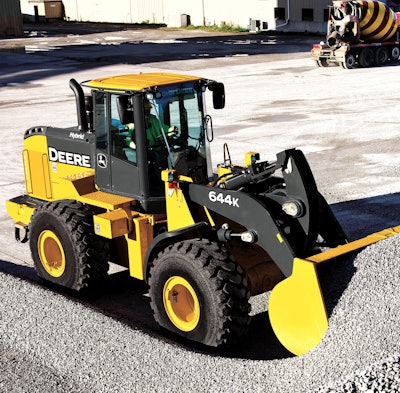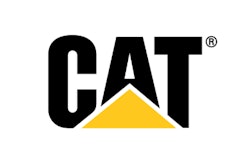
As recently as the ’90s, fuel economy often meant you wanted a fuel tank large enough to run 10 hours. But in the early 2000s, that began to change.
“The economy became more challenging,” says Brian Rauch, senior vice president of engineering, manufacturing and supply management, Deere & Company. “Contractors started to get more sophisticated and were focused on where their margins laid.”
When diesel fuel went over $4 per gallon, many contractors began to realize how important fuel economy was to margins. This focus has remained even as fuel prices retreated from their highs.
“The trend and the importance of fuel efficiency for construction equipment will continue to rise,” says Jason Hurdis, senior market professional, Caterpillar. “Regardless of fuel prices, fuel costs can be as high as 50% of operating costs, so it is still a major impact to the customer’s profitability. Fuel efficiency data and information is becoming equally important, if not more important, when selecting and purchasing machines.”
Fuel efficiency really needs to measure productivity and not just the amount of fluid consumed.
“Within John Deere, fluid efficiency is a measure of how much work customers get done (productivity), as well as how much fluid they consume,” says John Chesterman, product marketing manager, production class wheel loaders, John Deere Construction & Forestry. “For example, a wheel loader’s fluid efficiency is defined by the tons of material moved divided by the gallons of fluid consumed. Fluid efficiency is measured in a variety of applications depending upon the machine type — trenching, stockpiling, truck loading, grading, etc. Even idling can be a significant consumer of fluid.”
The advent of selective catalytic reduction (SCR) systems changes the way you measure efficiency. “Total fluid efficiency is an important consideration on products that consume both diesel fuel and diesel exhaust fluid (DEF),” notes Rauch. “There are many trade-offs that can be made to achieve emissions compliance that affect how much DEF is consumed relative to diesel fuel.”
Keeping Fuel Efficiency on Track
Current diesel engine emissions regulations resulted in new technologies that lay the foundation for future efficiency gains.
“Tier 4 Interim and Tier 4 Final solutions forced engine manufacturers to focus more on efficiency, and one way has been through the marriage of advanced electronics and fuel injection methods/designs,” says Brad Stemper, solutions marketing manager, Case Construction Equipment. “At its most basic level, emissions are made up of leftovers from the combustion process. Advanced electronics paired with high-pressure common rail (HPCR) systems have allowed more exact fuel injection to take place, putting just as much pressurized fuel into the combustion chamber as needed. This creates better and more efficient use of the fuel to get more power from the engine.”
Tracking fuel use is the first step. “To determine fuel efficiency, it must be tracked,” says Hurdis. “The easiest way to track fuel efficiency is with onboard machine or off-machine telematics such as VisionLink. VisionLink provides the customer with idle time, idle time fuel, production and working fuel consumption, which results in fuel efficiency. Manual methods can also be used to track everything from hours to fuel consumption or fuel bills.”
Telematics systems make it possible to measure fuel economy in a way that makes sense for your operation. “The easiest tool for determining fluid efficiency with your fleet is to utilize the JDLink telematics tool,” says Craig Timmerman, product marketing manager, engines and drivetrains, John Deere Construction & Forestry. “It can track and report fluid efficiency in numerous ways that can be tailored to meet the needs of the customer. Machines can be grouped or looked at individually, for example.”
A Systems Approach
To gain efficiency, manufacturers are looking past the diesel engine.
“Fuel efficiency is also being achieved by building in more efficient systems around the engine,” says Stemper. “Wheel loaders, for instance, have migrated to a five-speed transmission with a lock-up torque converter. The lock-up torque converter gives you more gear selection to keep the engine operating in its best operating range, increasing fuel savings and roading speeds by as much as 40%.”
Hydraulics have helped improve performance and fuel efficiency in a similar manner. “Larger return lines have been designed in excavators to minimize backpressure buildup,” says Stemper. This eliminates the need to overcome that backpressure and thus saves energy.
Variable-displacement pumps have also been built into wheel loaders and backhoes. Unlike a fixed pump which pumps oil at all times, creating wasted energy and fuel loss, variable-displacement pumps do not pump oil until a load is sensed. Backhoes have achieved 7% to 8% fuel savings by going to this technology.



















